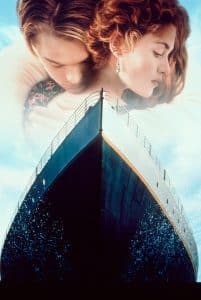
James Cameron’s epic romance Titanic premiered in 1997. It catapulted Leonardo DiCaprio and Kate Winslet to newfound fame, won 11 out of its 14 Academy Award nominations, was selected for preservation in the United States National Film Registry, and launched a fierce and ongoing debate: could Jack have stayed on the wreckage door with Rose?
In answer to this, Cameron has consulted with experts to put the matter to rest. The ending of Titanic sees star-crossed lovers Rose and Jack fighting to survive the sinking ship. They witness everything from the ship splitting to survivors clinging to anything – including other people – to stay afloat. Rose finds reprieve atop a large door but Jack is seemingly unable to join her. But could he? Commissioned scientists answer once and for all.
James Cameron consults scientists to answer if Rose and Jack could have shared the live-saving door in ‘Titanic’

Movie buffs, romantic bleeding hearts, the crew behind Mythbusters, everyone has something to say about the likelihood of Jack and Rose sharing that door. With the film turning 25 this year, Cameron addressed the age-old question and discussed it in an interview with the Toronto Sun. “We have done a scientific study to put this whole thing to rest and drive a stake through its heart once and for all,” he said.
RELATED: 25 Years Later, Kate Winslet Still Can’t Watch Herself In ‘Titanic’
Cameron continued, “We have since done a thorough forensic analysis with a hypothermia expert who reproduced the raft from the movie.” In fact, there will be a full special all about this topic in February. But for now, Cameron gave a sampling of their scientific process.
Breaking down exactly what was happening on that makeshift raft

From a narrative perspective, Cameron stresses that Jack “needed to die. It’s like Romeo and Juliet. It’s a movie about love and sacrifice and mortality. The love is measured by the sacrifice.” It just so happens that the science backs up his nonexistent chances of survival too. To prove this, “We took two stunt people who were the same body mass of Kate and Leo,” shared Cameron, “and we put sensors all over them and inside them and we put them in ice water and we tested to see whether they could have survived through a variety of methods and the answer was, there was no way they both could have survived. Only one could survive.”

Mythbusters says otherwise in a 2013 episode, proposing Jack tie a lifejacket to the bottom of the door to help balance its buoyancy. To this, Cameron notes the swift and devastating effects of hypothermia. Hypothermia takes effect fastest in water, up to 25% faster than just from air. In temperatures below 35 degrees, a person can lose consciousness in under 15 minutes; even before that, the sheer cold severely impairs muscle control, leaving many unable to even orient their bodies and save themselves. Just falling into the water alone was a death sentence for many because of the frigid temperatures.
It seems the matter may be put to rest this winter. Are you convinced or do you still have some doubts or questions?

